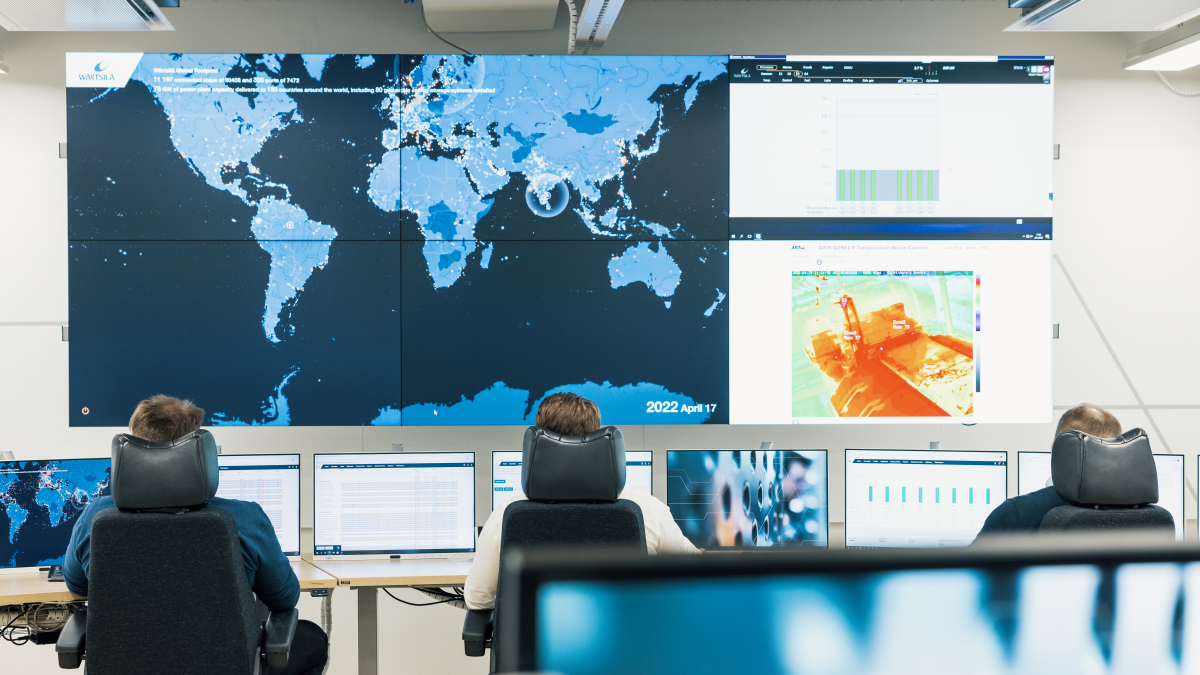Business Sectors
Events
Contents
Register to read more articles.
Hapag-Lloyd deploys digital tools for cyber and decarbonisation compliance
One of the world’s largest container ship owners is using software and analytics to comply with the latest cyber resilience requirements and EU and IMO environmental regulations
Germany-headquartered Hapag-Lloyd is using digital tools to remain compliant with the latest cyber security, environment regulations and class requirements while it ramps up investments in cutting container ship emissions.
Hapag-Lloyd is using StormGeo’s digital solutions and services, including s-Log reporting software and s-Suite with enhanced cyber security and data encryption, to upload files, extract data, and to transmit sensitive data for storage and analytics.
StormGeo’s programs will keep Hapag-Lloyd’s fleet of around 300 ships compliant with the FuelEU Maritime regulation that came into effect on 1 January 2025, in line with unified requirements (URs) introduced by the International Association of Classification Societies (IACS) for newbuild ships and onboard electronic equipment, UR E26 and UR E27.
This European Union (EU)-driven initiative encourages shipping companies to decarbonise their operations by reducing the greenhouse gas (GHG) intensity of their vessels and increasing the use of sustainable fuels, such as biofuels, methanol, ammonia and others.
Hapag-Lloyd relies on StormGeo’s s-Log and s-Insight to accurately monitor, report and validate (MRV) its GHG intensity for FuelEU Maritime compliance and all other GHG emissions-reduction schemes, such as EU’s emissions trading scheme and MRV, plus IMO’s data collection scheme, Carbon-Intensity Indicator and Environmental Ship Index.
To remain compliant, Hapag-Lloyd requires data reporting, validation and verification by its emission verifier, classification society DNV.
Up to 50 of the owner’s container ships are running on biofuels or blends, which means Hapag-Lloyd requires a robust biofuel-compliant reporting system that can align biofuel consumption data with the specific demands outlined in the new regulation. BioLNG and fatty acid methyl ester can reduce GHG emissions by up to 80% compared with conventional fuels.
“Solutions for environmental compliance have benefited us and the industry at large”
Hapag-Lloyd was the first shipowner to convert a large container ship to dual-fuel propulsion capable of using LNG. By the end of 2025, it will have a fleet of 13 LNG dual-fuel vessels in operation, thereby reducing CO2 emissions significantly.
“It is crucial for us to work with partners who share our commitment to drive the shipping industry toward a more sustainable future,” said Hapag-Lloyd director of fleet energy management, Heribert Riesenhuber.
“Solutions for environmental compliance have benefited us and the industry at large. We continue our work with StormGeo to advance our decarbonisation goals and tackle new reporting requirements, such as FuelEU Maritime.”
Hapag-Lloyd uses ship-to-shore data reporting tool s-Log and analysis program s-Insight to collect fuel consumption data and then runs strict validation rules to identify and flag any reporting errors, improve data quality and increase accuracy. The validated consumption data is then calculated into GHG intensity data, which can automatically be shared with all major emissions verifiers globally, including DNV, through application interfaces.
Riviera’s Cyber & Vessel Security Webinar Week will be held from 12 May 2025 focusing on the latest developments in cyber and vessel security. Use this link for more information and sign up to the webinars.
Related to this Story
Women in Maritime Today: Elin Saltkjel says no day working in maritime is dull
Events
Maritime Environmental Protection Webinar Week
Cyber & Vessel Security Webinar Week
The illusion of safety: what we're getting wrong about crews, tech, and fatigue
Responsible Ship Recycling Forum 2025
© 2024 Riviera Maritime Media Ltd.














